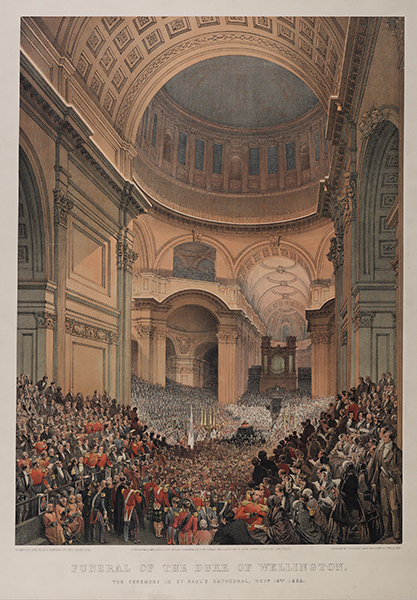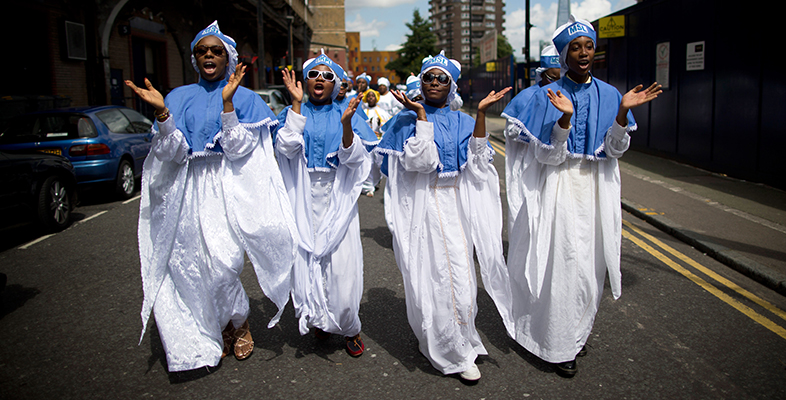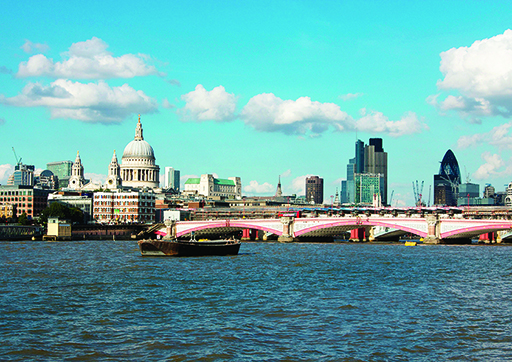2.1 St Paul’s: a national church
We will now consider one of the most iconic symbols of Christianity in Britain – St. Paul’s Cathedral in London. This is also a place where the continuing, though changing, importance of religion in British society is evident.
St Paul’s continues to hold a conspicuous place in the London skyline, despite there being a recent proliferation of much larger skyscrapers. One reason it continues to hold a central visual place is that it was built on the highest ground of the City, simply because it was there first.
The first church on this site probably dates back to around 600. The medieval cathedral which replaced a series of smaller church buildings was destroyed in the Great Fire of London in 1666. This tragedy provided an opportunity for Sir Christopher Wren to design the present church. The current building was constructed between 1675 and 1708, when Christianity had an almost complete religious monopoly in Britain.
St Paul’s Cathedral continues to be a strong visual statement of Christianity’s dominance and persistence.
St Paul’s grandiose interior hosts regular Christian worship with the formal liturgy of the Church of England. The cathedral employs a professional choir, prioritising a long tradition of promoting high quality music within the established Church.
But St Paul’s also hosts services to mark major national occasions. Some of these significant national events have ranged from celebrating the military victories of Queen Anne’s reign in the seventeenth century to Queen Elizabeth II’s diamond jubilee in 2012. In 1852, 12,000 people filled the building for the Duke of Wellington’s funeral (Keene et al., 2004). For Sir Winston Churchill’s funeral only about 3,000 mourners were allowed in the cathedral itself, but it is estimated that 350 million watched the St Paul’s service on television (Klein, 2015).

Activity 3
Now watch this Google 360 video of St Paul’s Cathedral [Tip: hold Ctrl and click a link to open it in a new tab. (Hide tip)] as introduced by David Ison, the Dean of St Paul’s. As you watch this video, take some notes about the various reasons why people use the cathedral. What does Ison present as the most important purpose of St Paul’s today?
As you will remember from exploring the Neasden Temple, by clicking on the video and moving your mouse, you can change the camera angle to pan around the scene and explore the building more fully. Google 360 videos are best viewed in Chrome, Edge or Firefox browsers.

